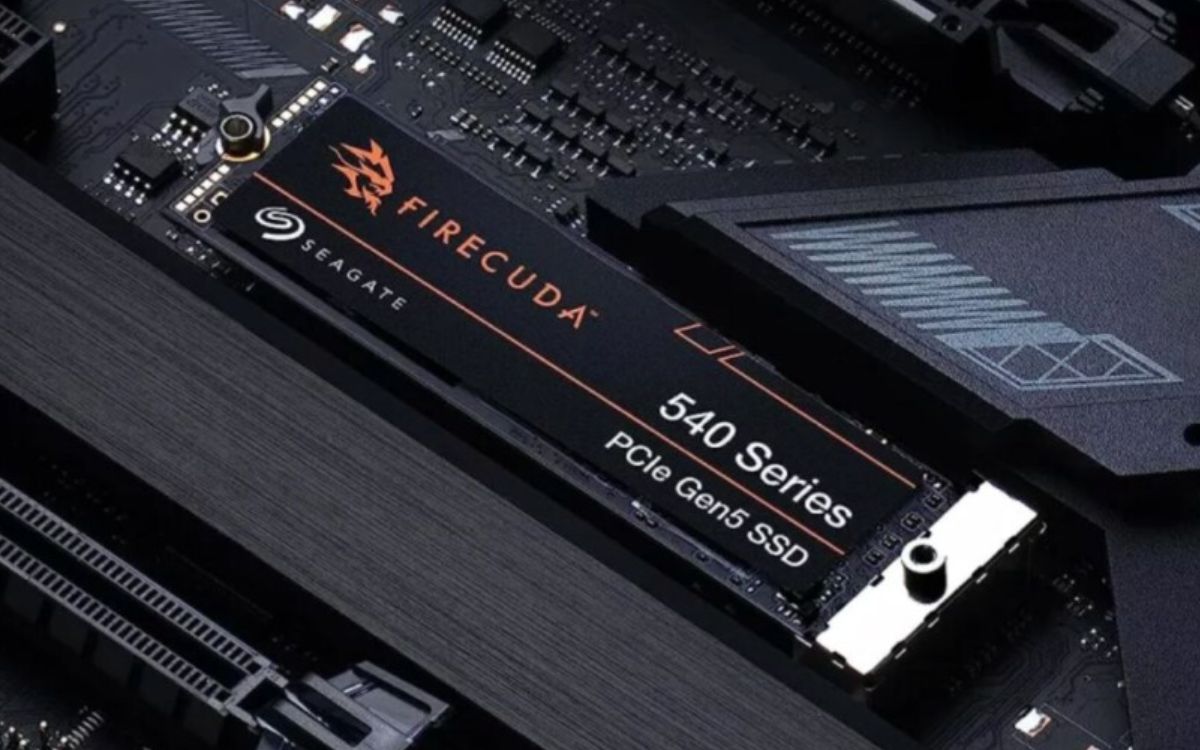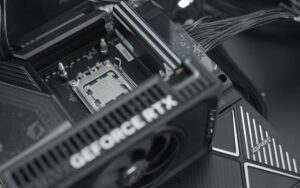
SSDs (Solid State Drives) have revolutionized the way we store digital data, almost completely replacing old hard drives (HDDs) in modern PCs and notebooks. Superior speed, no moving parts, and energy efficiency are just some of the advantages SSDs offer.
However, to ensure your SSD is working at its best, regular testing is necessary. Next, we’ll explore seven free benchmark tools that will help you measure your SSD’s performance. But first, we need to understand what each of them evaluates.
Let’s go?

Parameters evaluated in SSD benchmarks
The following parameters help determine the efficiency and performance of your SSD in different usage scenarios.
Sequential reading and writing
- Importance: vital for tasks involving large file transfers, like moving videos or backups.
- What they measure: the speed of reading and writing large blocks of data continuously.
Random read and write (4K)
- Importance: evaluates performance in daily tasks, such as loading applications and the operating system.
- What they measure: the speed of reading and writing small blocks of data in a non-continuous manner.
OPS (Input and Output Operations Per Second)
- Importance: high IOPS indicate superior performance in tasks that require many simultaneous read/write operations, such as database servers.
- What they measure: the number of read and write operations that the SSD can perform per second.
Access Time
- Importance: Lower access time results in faster loading of files and applications.
- What they measure: the time it takes the SSD to access data.
Temperature
- Importance: SSDs that operate at lower temperatures are more reliable and durable.
- What they measure: the operating temperature of the SSD.
Valores S.M.A.R.T.
- Importance: Monitoring these values helps predict failures and maintain data integrity.
- What they measure: a series of SSD health indicators, including error rates, hours of operation, power cycles, and more.
Free software to benchmark SSDs
1 – CrystalDiskMark
The most popular tool for measuring the sequential and random read and write speed of SSDs. It is recognized for its simple interface and ease of use, allowing even less experienced users to perform detailed benchmarks. Download CrystalDiskMark.

Measurements taken
Sequential read and write tests as well as random read and write tests on various block sizes. It provides a clear view of SSD capabilities in different usage scenarios.
Main parameters evaluated
- Sequential reading (Q32T1)
- Sequential writing (Q32T1)
- Random read 4KiB (Q8T8)
- 4KiB random writing (Q8T8)
2 – AS SSD Benchmark
A specific option for SSDs that performs detailed tests without using the system cache. It is very useful for measuring raw SSD performance under various operating conditions. Download the AS SSD Benchmark.

Measurements taken
It performs sequential read and write, 4K random read and write tests, and includes a copy benchmark test that simulates common file operations. It also measures access time and I/O performance.
Main parameters evaluated
- Sequential reading and writing
- 4K random reading and writing
- Copy Test (ISO, Programs, Games)
- Access time
3 – ATTO Disk Benchmark
Versatile software used to measure the transfer rate of SSDs at different file sizes. It is widely used by manufacturers to validate the performance of their storage devices. Download the ATTO Disk Benchmark.

Measurements taken
It performs read and write tests on various block sizes, from 512 bytes to several megabytes. This allows for a detailed analysis of how the SSD behaves with files of different sizes.
Main parameters evaluated
- Reading and writing in multiple block sizes
- Performance in sequential reading and writing
- Behavior under different workloads
4 – Intel IOMETER
A powerful alternative for measuring the I/O performance of SSDs. It is highly configurable and can simulate various workloads to test SSD capacity in different situations. Download Intel IOMETER.

Measurements taken
It makes it possible to configure personalized tests, such as sequential and random readings and writes, with different access patterns. It is ideal for advanced users who need detailed analysis of I/O performance.
Main parameters evaluated
- I/O performance under different access patterns
- Reading and writing latency
- Ability to handle multiple simultaneous operations
5 – AmorphousDiskMark
Direct alternative to CrystalDiskMark for macOS, focusing on sequential and random read and write performance tests. It offers a simple interface and clear results, making it easy to analyze SSD performance. Download AmorphousDiskMark.

Measurements taken
AmorphousDiskMark performs sequential and random read and write tests, offering a comprehensive view of SSD capacity in different usage scenarios.
Main parameters evaluated
- Sequential reading and writing
- Random reading and writing
- Performance geral do SSD
6 – KDiskMark
An SSD benchmark option for Linux systems, inspired by CrystalDiskMark. It offers sequential and random read and write tests, providing a robust alternative for Linux users. Download KDiskMark.

Measurements taken
It works with sequential and random reading and writing tests, allowing you to evaluate the SSD’s performance in different usage conditions.
Main parameters evaluated
- Sequential reading
- Sequential writing
- 4K Random Reading
- Random Writing 4K
Why test SSDs?
Evaluating the performance of SSDs is necessary for several reasons that go beyond simply checking whether the device is working. Firstly, confirming the performance advertised by manufacturers is the first objective. After all, advertised read and write speed specifications may not reflect the reality of everyday use, and running benchmarks helps ensure that the SSD delivers on these promises.
Identifying performance bottlenecks is another pertinent reason. Sometimes system slowdowns can be attributed to the SSD, and benchmarks help you find out if it is actually the cause.
This may include comparing application loading times, file transfers, and other I/O intensive operations. Knowing exactly where performance is below expectations allows you to take corrective action, whether by adjusting settings or replacing hardware.
Ensuring the stability and reliability of the SSD is also another highlight. Stability issues can lead to catastrophic data failures, and benchmarks can help detect errors and anomalous behavior under intensive load.
This is especially important for users who rely on SSD for critical work or storing important data.
Furthermore, predicting SSD lifespan is possible by monitoring SMART (Self-Monitoring, Analysis, and Reporting Technology) values. These tests help anticipate future problems and understand the device’s durability over time. For example, write and read cycles can indicate how much time the SSD has left before it starts experiencing significant failures.
Lastly, optimizing your system settings is a practical necessity for testing your SSD. By choosing the right software for your needs, you can get a detailed view of your device’s performance.
Source: https://www.adrenaline.com.br/hardware/softwares-benchmark-ssd/


